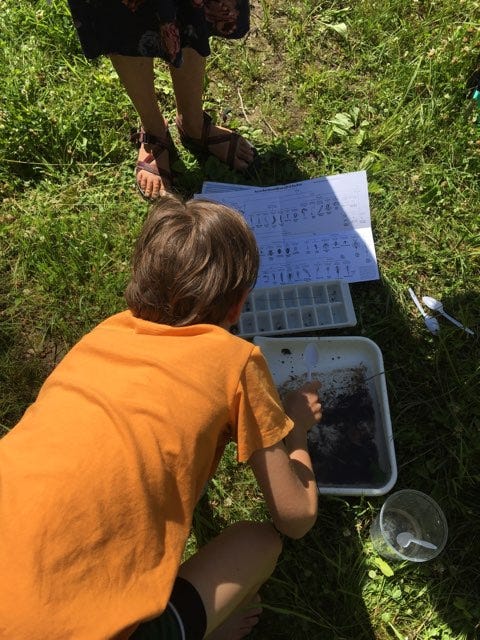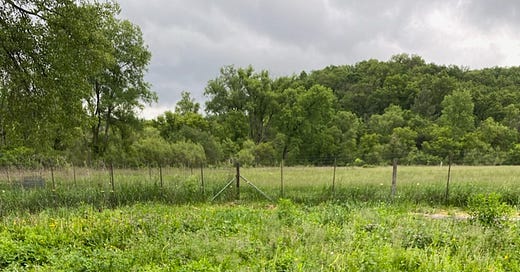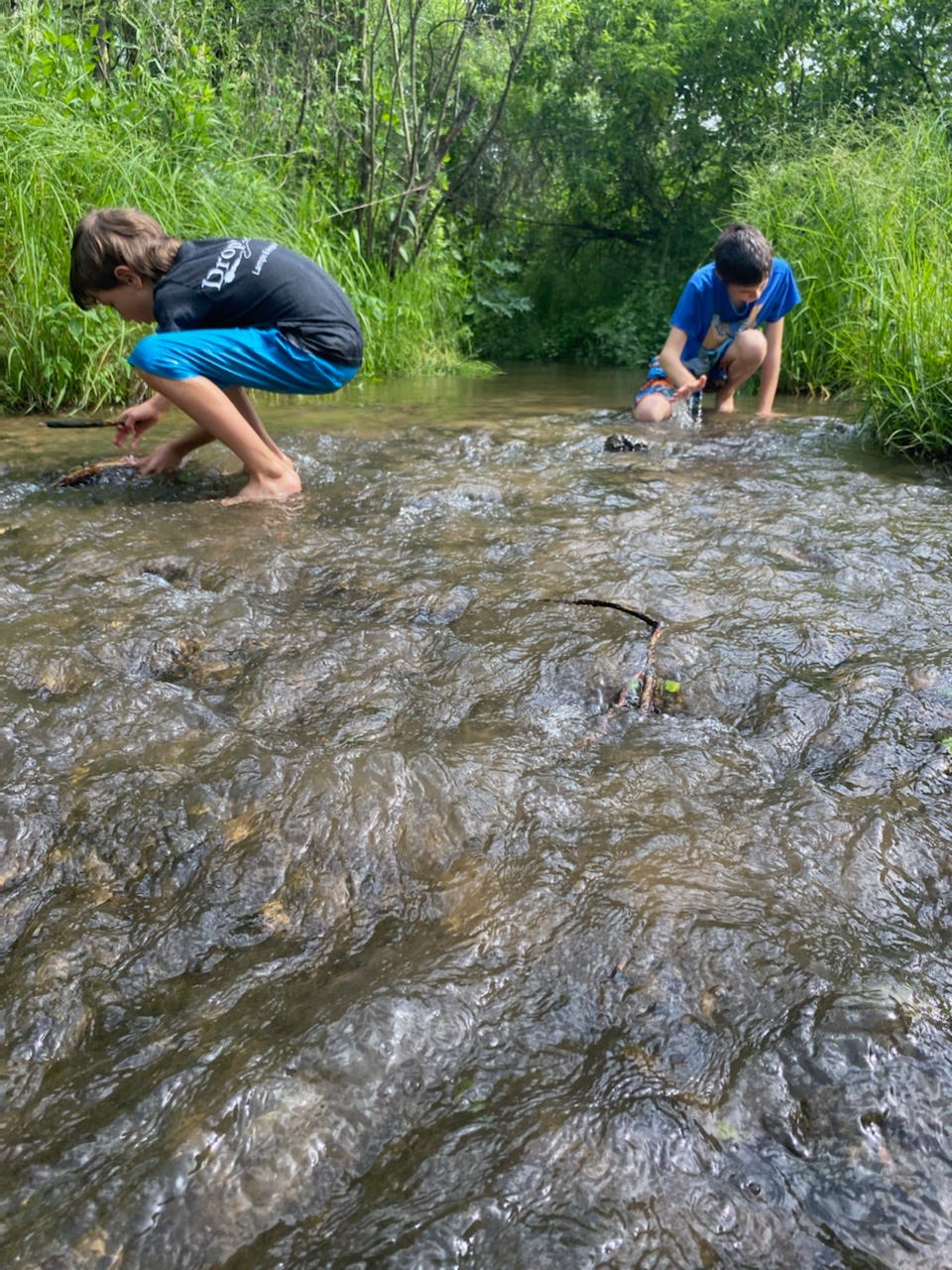To be honest, being at our new house has dug up a lot of feelings. I have to remind myself that we are just trying things on, essentially, that we are seeing how to make a farm happen here when there isn’t one, yet, just a blank slate; possibilities could bloom here, but not without a lot of elbow grease.
Everyday I think of how much we put into our last property, and how we were taken advantage of by the landlord (mainly our one person, our contact), and how we did not have an ally anywhere to fight for us. It is maddening to think about how we could have let that happen, how we let it go on for so long, and after all of that work and money we put in, having to leave with nothing.
After we decided for the protection of our family that we needed to leave such a scary situation that didn’t let us buy the property that we were expected to continue pouring our money into, all while only giving us a short-term lease, we decided to look elsewhere for a better situation. I will skip the details, but we found a good situation, again and again, over these last two years, actual farms that we could have just plugged ourselves into, but Alex and I were grieving in different ways; I knew what I wanted, and Alex did not. It was a problem that set us back, which explains our 2+ years on the road; working at different farms, trying to revive something within, trying to find common ground, to scarify a seed to make it germinate inside one of us while the other’s seed had already burst open, revealing its roots and shoots, embryo leaves expanding and turning green, but confined to a jar, bumping up against the glass. My cotyledons were already unfolded, while Alex’s still remained dormant, awaiting direction from the apical meristem, where a stem’s cells divide, thus creating the plant, oftentimes referred to as the plant’s primary growth process. I am hopeful these two plants—Alex and I—can have our primary growth processes line up here, at this place, expand our leaves, not be either cooped up in a glass jar or be dormant in the soil any longer.
So, while I have decided we do not know what the future holds, and if we will even be in this house for more than a year, we are going to wait and see and do our best while we are here. That is why I planted asparagus this week. On a few rainy afternoons, I took the boys out (while Alex was at work) to plant some random asparagus patches around the fields, mostly on the edges, where asparagus might grow wild naturally. We dug holes and put in the crowns, hilling them slightly with muddy earth, starting the waiting game. At our last farm, we planted thousands of asparagus plants, in rows, cultivating them by tractor. I remember planting them with the crew our first year there, also in the rain, also in mud.
Asparagus, like all perennial fruits and vegetables, are planted for the future. They are green shoots of hope, essentially; hope that you might be able to harvest them three years after you plant them (three years is how long you should wait for your first harvest, in order for healthy plants to get established), and then harvest for them years after that. Asparagus plants typically will be harvest-able for twenty years, but after that they can also spread their rhizomes to increase their shooting ability, so they can actually last for decades, if left undisturbed. When the boys and I dug the holes here for asparagus in various spots, I know we might not be here for long, and although I want nothing more than to be somewhere forever, I know that forever might not be here. Although I think the small community (just 3 other people now, plus us) likes having us here for the extra help and the growing of food, we do not feel pressured here to start our farm again and stay if it isn’t right for us or if it’s too hard or too expensive. After all, a complete blank slate might just be too difficult, too uphill, too pricy to start completely from scratch. An asparagus spear is buried underneath the soil the first year, then slowly sprouts as the farmer keeps burying it slightly, until the subsequent years when it gets stronger, but it should be thicker than a pencil before its first harvest, which is generally in its third year. It is a long game, and it takes patience.
Why plant asparagus when there is a chance you might not get to harvest it? I suppose for the future, for whoever else gets to harvest it, to feed people that are not here yet. For lucky someones who stumble upon it, decades later, and now don’t need to buy it from the grocery store, instead getting to snap it from the ground and then walk into their kitchen to cook it with lemon and butter until spring is done and they get to go to that same spot next year to do it all again.
Planting perennials is a sign of hope, a sign of optimism, a way to move on, and a way to heal. Maybe humans should think more thoughts of: maybe this life isn’t about just me. Maybe I am planting food that will feed other people that I will never meet, people who will be so excited and think, “how lucky I am!” when they find it. Planting any perennials work this way, too, as they have more ability to sequester carbon, perhaps doing something to reel back our current climate catastrophe’s devastatingly sped-up timeline. Perennial foods, like all perennials, still have those beneficial carbon sink benefits with deep root systems and frilly or leafy Arial stems and leaves, but foods are always more immediately satisfactory, as they have the benefit of quick-acting nourishment. Any food you can pick yourself gives that kind of pleasure, as it must tap deep into our ancestral DNA; it is not only the phytonutrients that it gives you when you pick and eat a blackberry, but the feeling of picking blackberries off the bush and popping them into your mouth, which can be an act of speaking with the earth.
Plant annuals in your garden for this season, but plant perennials for the future. The annuals are wimpier, and need to be pampered with water and nutrients because of their fragile plant parts. Perennials are survivors. They will get the job done where ever they are.
From the Farm Kitchen:
Since Alex has Fridays off and can stay with the boys, I started working Fridays at an organic CSA farm about half an hour from here. I have been loading up on vegetables there and trying to get creative with recipe development, especially with trying to come up with more hot weather meals. Also: after I did not succeed in getting some dairy goats (see below) (sniff) (cries into keyboard), I did find an Amish farm that sells raw milk so I can start making ice cream again. I still want goats though!!
From the Farmhouse:
I don’t know—from this newsletter, you might see that I am going through something, and maybe it is partly I can see how much money and work it is really going to be to start again and feeling very blue about it. This year, at least until the fall when we figure things out a little better, we are just working with the community on growing a big garden for everyone that lives here in their designated community garden space, which was mostly weeds and a cover crop of clovers when we first got here. In other farm news, someone on a listserv I’m on was giving away dairy goats, which I immediately volunteered to come get, but someone beat me to the punch. It was sad, and the sadness I felt also made me realize how much I miss having goats! So we are thinking that through, too, and scouring facebook marketplace for some inexpensive ways to get goats. But maybe I just have to be patient for that, too, like everything else.

.





